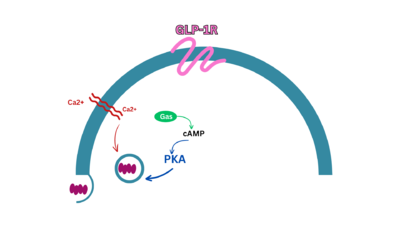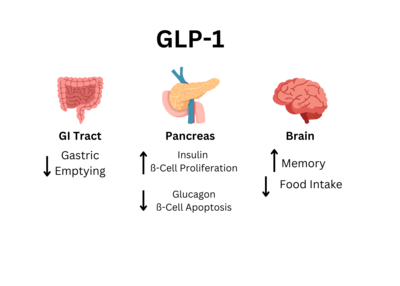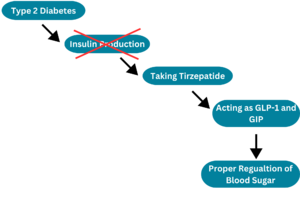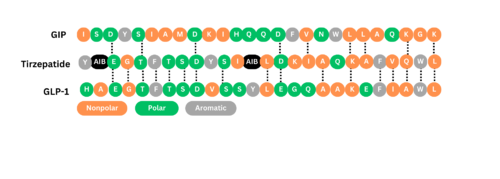User:Lily Lindemann/Sandbox1
From Proteopedia
Glucagon-Like Peptide 1 Receptor (GLP1-R)
Introduction and Function
or GLP1-R uses the glucagon-like peptide (GLP-1) as an initial signal for the body to start secreting insulin and in turn inhibits glucagon secretion. Typically after consuming food the bodies glucose levels rise, which causes an increase in GLP-1. The ligand binds to GLP-1R creating a signaling cascade resulting in the production of cAMP. After the signaling cascade, insulin is secreted to the rest of the body. Insulin is used in the body to maintain glucose levels and regulate the storage of excess nutrition. The GLP-1 hormone was initially discovered with lack of understanding to how the hormone regulated insulin in the body. GLP-1R was later discovered in 1990s while scientists were trying to understand the mechanism of GLP-1 action. [1] The structure of the receptor was determined using cryogenic electron microscopy.
DiseaseDiabetes and ObesityType II Diabetes is a chronic medical condition in which the pancreas does not properly produce insulin for the body.[2] Due to the lack of insulin in the body, a persons blood glucose levels can be dangerously low. The lack of insulin and low glucose level can be related to the decrease in levels of GLP-1 within the body. When GLP-1 is not bonding properly to its receptor, the insulin regulation in the body is disrupted. When a persons blood sugar levels are too low they can cause a person to become dizzy and tired. There is also the possibility where GLP-1 is not broken down at the proper time which can cause a persons blood sugar to become to high which can lead to a person feeling feverish and sick. There has been ligand antagonists created in order to help with the regulation of GLP-1 to ensure that the body is receiving the proper amount of insulin to maintain proper blood sugar levels.
Obesity is a disease caused by an accumulation of excess nutrients in the body, resulting in an increase of storage in the body.[3] This disease can lead to the body having an insulin resistance. The insulin resistance can be caused by a large number of factors, from a persons genetics to their lifestyle choices. Once the body is unable to process insulin, the signal cascade is disrupted. The disruption can cause a person to develop Type II Diabetes.
Ligand and Receptor InteractionsHormone InteractionsThe start with the hormone docking in the N-terminus before moving the rest of the hormone into place. The ligand uses between two tryptophan residues to lock in the ligand at the C-terminus. There is also an hydrogen bond interaction between a glutamate and glutamine that keeps the ligand bound. Drug InteractionsThe drug antagonist is shown in a mint color while the receptor is shown in pink. The interaction between Tirzepetide and the receptor are using of the tryptophan residues. Which is a similar interaction as between the natural hormone and the receptor. The drug antagonist also uses in the N terminus between a tyrosine and glutamate and also tyrosine and glutamine. RelevanceTirzepatide and other GLP-1R related antagonist drugs, known by the names Mounjaro and Ozempic, help to regulate blood glucose levels.[4] The GLP-1R antagonists are able to aid the body in proper secretion of insulin because the antagonists are harder for the body to break down. This allows the GLP-1R signal to last for longer in Type II diabetes patients. Which allows them to maintain a proper level of insulin for longer periods of time. Although these drugs can make remarkable changes, the long term effects of GLP-1R related drugs are unknown. There have been some hints toward thyroid cancers but this was only shown in mice during trial periods. This can become a concern when the drug is used for cosmetic purposes rather than medical. In the case of these antagonists, they have been prescribed to help patients with weight loss, which disrupts their bodies natural secretion of insulin making them feel less hungry. This has a fast effect for weight loss but other long term medical concerns have not determined due to the recent discovery of the drug.
References
| ||||||||||||




